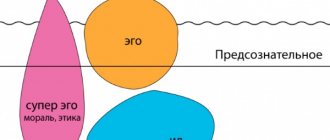In the most general and broad sense, a motive is a matter, a reason, a circumstance among other alternatives that induces someone to do something or causes a particular action.
This allows us to maintain a constant interest in activities that, if completed, can satisfy a need or fulfill a dream.
From the moment we become aware of our potential and the reality around us, we feel the need to understand the nature of emotions, their connection with thought and how these two dimensions interact and condition our actions and us. They motivate you to achieve personal success.
Motives and motivation from the point of view of psychology
Motive and motivation are two terms related to each other, but they do not have the same meaning. They complement each other. Thus, understanding the difference between the two concepts is important for understanding human action in general, as well as how and why a person decides to do something specific in particular.
Motive in psychology is the reason, and motivation is the force, the engine that makes us perform our actions, and is the product of our thoughts and emotions, it is the desire for well-being. We can classify motivation according to social and biological criteria according to Hull's classification.
Social reasons are based on relationships with subjects of society, associated with the general growth of the subject's personality.
There are three types:
- achievement is that personal desire to do something difficult, overcoming obstacles;
- power - consists of achieving status, which allows you to influence other people or be a guide to others;
- affiliation - the need to communicate with other members of the group, whether for reasons of interest, religion, etc.
Primary (biological) motives with innate characteristics are necessary to ensure the survival of an organism or species, among which the main ones are: hunger, thirst, sleep and sex. They are common to all species. There is also the maternal impulse, reasons for temperature, excretion, oxygen, activity and pain avoidance.
Secondary motives (social) motives , acquired through learning throughout a person's life, are important in increasing the likelihood of social and personal growth of the said person in the society to which he belongs.
Primary motives are those that are associated with essential needs for the survival of the individual.
There are many interpretations of motivation. Here are some theories :
- Balance : homeostatic (according to Hull), when the body experiences some kind of deficiency, some biological or mental need appears, impulses act to restore the lost balance.
- Needs : Motivation is activated in response to a person's needs.
- Cognitive (according to Tolman): Motivation drives behavior to fulfill the expectations and goals that each subject has set as a result of previous learning.
- Behavioral : Motivation is driven by the pursuit of pleasure and escape from pain caused by beliefs.
- Psychoanalytic : our behavior is motivated by unconscious impulses, sexual and aggressive instincts.
- Humanistic ) are satisfied, people develop higher needs and desires (top).
Maslow's pyramid is a psychological theory proposed by Abraham Maslow in his work A Theory of Human Motivation. He articulates a hierarchy of human needs and argues that as the most basic needs are satisfied (at the bottom), people develop higher needs and desires (at the top). According to Maslow's Dispondriam Pyramid:
- basic physiological factors that maintain homeostasis (breathing, eating, sleep, pain avoidance, etc.);
- safety and security, physical safety and health, resources and protection of your property and assets;
- communication, friendship, social integration and social recognition;
- respect, high evaluation (need for self-esteem, confidence, achievement, independence and freedom) and low evaluation (respect for other people, need for attention, appreciation, recognition, reputation, etc.).
- a disorder is an inhibitor of some behavior aimed at achieving a goal; in all situations in our life, when this happens, an unsatisfied need appears.
The stronger the goal motive, the greater the disappointment when the goal is not achieved.
When faced with an unpleasant situation, we manage to admit our mistakes , we can begin a process through which we will try not to repeat the same mistakes of the past again.
Types of Human Motivation
Such types of motivation as “carrot” and “stick” are widely known. This is nothing more than an idea of negative and positive motives. These principles have long been used in economics, politics, management, education and other areas, including everyday life.
It is interesting that these types of motivations can characterize not only an individual, but also a certain society. It is known, for example, that since ancient times the Russian consciousness has been more characterized by “stick” motivation than “carrot” motivation. This is even reflected in the proverbs: “Until thunder strikes, a man will not cross himself.” A similar character of the Russian person was noted by researchers of culture and even religion. Thus, one church historian said that Russian Orthodox people have long believed not so much in God as in the devil, and in Russian religious (and for the most part folk-religious) culture, thousands of ways and advice have arisen on how to avoid meeting with evil spirits; at the same time, original Orthodoxy condemns such a practice, because if a person believes in “an all-powerful God,” then he should not be afraid of evil spirits.
“Gingerbread” is largely a Western system of motifs. Thus, in European countries there are a number of incentives for citizens who strictly comply with the law, and a relatively mild system of punishments for those who violate the laws. In our country, the opposite is true: practically nothing is provided for law-abiding citizens, but the system of punishments is extensive, confusing, cruel and clumsy.
However, in modern Western society the role of the “stick” in certain areas is also growing. There, cruel treatment of children and violation of discipline in enterprises are severely condemned. The existing problems, say, in public health care in themselves are a “stick” for Europeans, encouraging them to work hard to pay for private medical services.
Which of these motives are most effective? Each country and each people has its own answer to this question. History shows that European society was favorably influenced by the widespread increase in the “carrot”, that is, the development of positive motives; but opposite trends led to revolutions, strikes, spontaneous and organized mass protests. This has been evident in European history for centuries.
In modern Singapore, the “whip” played a key role in the prosperity of society. There are a great many restrictions and prohibitions in this city-state, and in order to maintain impeccable order, punishments such as caning are widely used. There are no “carrots” for citizens here. And it seems strange to many of us how such methods have led Singapore to an economic and social miracle, high standards of living, social cohesion (and this in a multi-ethnic and multi-cultural country with a high population density) and the absence of mass discontent.
The countries of Eastern Europe, the USA, and China stand out in that their societies maintain a certain balance of incentives. For Eastern Europe, this was especially noticeable during the years of the Soviet bloc: citizens loyal to the state regime, who worked conscientiously and cared about their high “moral character” (from the point of view of the authorities), were guaranteed a fairly high standard of living, a certain degree of civil liberties, provision of consumer goods. And next to this is the brutal persecution of dissidents, dissidents, “parasites,” and the condemnation of an immoral way of life, elevated to ideology. Something similar could be seen in these countries both before and after the “Soviet era.” Only people who were characterized by a struggle between opposing systems of motives could build such a society. To compare this with the Western European system, just look at the prisons in these countries: Norwegian or Dutch ones are more reminiscent of resort hotels, and Polish or Romanian ones are more like a concentration camp.
This makes some sense. In the cultures of different countries, the image of a prison is given the role of a kind of “scarecrow”, with the help of which some people try to motivate others, thereby controlling their behavior. In Russia, the USA, China and the countries of Eastern Europe, a prison is not a correctional institution, but an “institution for the execution of punishments,” and its task is to oppress and destroy the individual, to destroy the criminal morally and often physically. And only the desire not to “slide” to the point of ending up behind bars gives the average person in these countries the impetus to perform socially useful actions (work, provide for their family, respect others, do not steal, do not kill, etc.). The first opportunity to avoid a prison sentence motivates a typical resident of these countries to commit a crime.
The behavior of Europeans is subject to different principles. Apparently, a prison term does not frighten them: after all, the existing restrictions in the prisons there do not humiliate the prisoner as an individual, the prison staff show him a certain respect. But at the same time, the discipline of Europeans, their politeness, and desire to work hard (but not overwork) is amazing. If you leave a wallet with money on a bench in some German city, then, most likely, a week later you will find it there completely untouched (currently the situation is much different due to the abundance of migrants in Germany and other European countries who have completely different psyche). The reason is that the average European is determined to achieve success and maintain his good reputation, and any “wrong” action can ruin this reputation. You won’t go to jail, but your friends will turn away from you, your girlfriend will stop loving you, your parents will kick you out of the house, you won’t be hired by a good organization...
If you delve into history, you can see what motivated people in different countries, creating similar inventions, performing the same actions. A good example is the creation of a printing press. Johannes Gutenberg was definitely positively motivated: with the help of his printing house, he wanted to improve his financial condition, gain fame and influence, become a pioneer of something new, and give people new opportunities for development. He was the creator, chief worker and owner of his enterprise. In fact, he succeeded in his plans: not only merchants and artisans, but also royalty and the church became his clients.
The Russian pioneer printer Ivan Fedorov was motivated by slightly different considerations. For him, his work was rather ritual; he wanted to “serve God.” The visible analogues of “god” for him were rulers, church hierarchs, and boyars. In the first Moscow printing house, opened by the Tsar and Metropolitan for personal needs, Fedorov was a powerless worker, and he did not want to have any personal benefits from this enterprise. For a long time, the pioneer printer was driven by circumstances that did not allow him to fully implement his plans: ordinary priests and book copyists were angry with him, the printing house was quickly burned and forced him to flee the country to Lithuania, and then to Ukraine. Outside Russia, the pioneer printer's business went much better, but again at the expense of strong rulers. The Russian pioneer printer never acquired his own personal printing house. Apparently, the Christian god and government officials were for Fedorov a kind of “whip” that should be feared and served.
“The Man in the Case” is another character, now literary, who was clearly motivated solely by the “whip”. His favorite saying was the expression “no matter what happens,” which he repeated whenever he saw something unusual. Those around him were surprised where this petty official, a quiet and inconspicuous man, suddenly awakened with remarkable energy, with which he began to scribble complaints left and right. All-encompassing fear prompted him to act, while those around him were motivated in their actions by positive considerations.
Functions of motives
The concept of motive is due to the cause or circumstance that drives or causes an action . There are three main functions of the motif:
In addition, all motives have selective functions and their own properties.
A person chooses a motive according to his needs.
Not all motives and incentives are equally strong. They change depending on time and environment. Human nature always wants to release stress, so learning experiences are always beneficial.
Links
- Klochkov A.K.
KPI and personnel motivation. A complete collection of practical tools. - Eksmo, 2010. - 160 p. — ISBN 978-5-699-37901-9.. - Ilyasov F. N. Methodology of the resource approach to the analysis of labor motives and attitudes // Monitoring public opinion: economic and social changes. 2013. No. 5. P. 13-25.
- Motive and motivation: eight main problems / H. Heckhausen // Heckhausen H. Motivation and activity. - M.: Pedagogy, 1986. - T. 1. - P. 33-48.)
- Shalyto A. A. Notes on motivation.
Types of motives
Motives are usually divided into drives and drives. Drives are primarily biological, such as thirst, hunger, sleep and the need to reproduce - all of which motivate us to seek out and engage in certain activities. Drives are thought to originate within the individual and may not require external stimuli to encourage behavior. On the other hand, motives are mainly determined by social and psychological mechanisms such as work, family and relationships. These include factors such as praise, approval, etc.
History of the study
To study history and understand the essence of “motive”, you need to consider substantive theories regarding this phenomenon. They analyze all the factors that influence the construction and formation of motivation. The main theory is the hierarchy of needs, which was compiled by Abraham Maslow. Key points:
- Needs are divided into groups for which there is a certain hierarchy.
- High needs are easier to satisfy.
- After one need is satisfied, another takes its place.
Initially, a person begins to satisfy desires that are at the lowest level of the hierarchical pyramid, gradually moving to higher ones.
There is a theory by Clayton Paul Alderfer - ERG. The American psychologist divided needs into 3 groups:
- For self-expression, active development.
- For communication. A person constantly interacts with society. He needs to communicate, meet new people.
- For existence. These include personal safety and physiological components of life.
Alderfer's theory is similar to Maslow's, but the first psychologist believed that desires could be satisfied from small to great or vice versa. The second psychologist argued that movement is only possible from less to more.
David McClelland came up with the theory of acquired needs.
The teaching helps to determine what desires can have an impact on productive activity.
There is also a theory of two factors, which was invented and promulgated by the American psychologist Frederick Herzberg.
He divided the factors that influence motivation into two groups - material and intangible.
External and internal motives
Motives are mainly divided into two categories: extrinsic and intrinsic. Researchers have identified two types of motive that are impressively effective:
External
Performing an action to achieve or prevent a particular outcome
Chances are, many of the things you do every day have an external motive.
According to research, an extrinsic motive is a construct that is present whenever an activity is performed to achieve some discrete outcome.
For example, playing sports to lose weight, learning to speak Italian to impress your friends, or getting to work on time so your boss doesn't yell at you.
Extrinsic motivation is doing something for the “external” reward you get from it. In your career, this could include financial gain, benefits, and even the ability to avoid punishment.
When you find your inspiration waning, refocusing on external rewards is a quick way to get back on track with a goal or activity, whether it's performing well at work or sticking to an exercise regimen. If you find yourself grumbling every day while commuting to do a job you're not excited about, try focusing on external rewards—whether it's a paycheck that pays for rent, groceries, or even free Christmas gifts for your kids. is a great way to get motivated.
Interior
This is an internal desire for success or determination. Experts define internal motive as performing an activity for internal satisfaction, and not for any individual consequences. When a person is intrinsically motivated, he or she is driven to perform for fun or challenge rather than because of external products, pressure, or reward.
Your job may not provide obvious sources of intrinsic motivation, but perhaps you go for a run because you enjoy “pulling the plug” and running along paths in the park, or helping your neighbor carry groceries up the stairs because you really want to. like.
Intrinsic motivation is doing something because you enjoy it. You feel an internal reward for this from yourself. At work, this could be working on purpose, spending quality time with your teammates, or achieving goals you've set for yourself.
Let's say, for example, you're a financial advisor and you get genuine satisfaction from being able to help people manage their money in ways that improve their lives. Or you're a marketing manager who likes to brainstorm new projects with colleagues.
Characteristics and stages
Main characteristics:
- Strength is intensity, activity that motivates an individual to action. This characteristic depends on physiological and psychological factors. To achieve the maximum power of motivation, you need to ensure that it is provoked from within, and not under the influence of external factors.
- Stability is the duration of maintaining motivation. This characteristic depends on the needs and characteristics of the individual.
Stages of motive formation:
- At the first stage, needs arise. They appear when an individual lacks something. The subject begins to look for a way to eliminate discomfort.
- Developing ways to satisfy desires.
- Assigning goals to begin active actions. To satisfy a desire, an individual needs to choose a way to obtain what he needs.
- Start of action. Satisfaction of needs requires physical and moral investments from the individual.
- Getting the result. Negative emotions disappear, positive ones appear.
Needs disappear after achieving the desired result, but then appear again.
Positive and negative motives
Human beings naturally seek pleasure and avoid pain. We are reward-seeking organisms, and everything we do contains a reward, conscious or unconscious, perceived or real:
- Positive motive (rewards).
This is a type of motive that you use when you perform an action for the reason of obtaining a reward, which is usually in the future. This future can be immediate or distant. The expectation of reward is what drives you.
- Negative motive (avoidance of pain).
A negative motive is punishment. This occurs when actions are taken to avoid pain or failure.
Another important thing to consider about negative motive is that if you do not have a solution at hand, then negative motive can cause helplessness and depression.
There is a difference between a negative and a positive motive:
- A negative motive is rooted in fear, while a positive motive is rooted in service.
- The difference between a negative and a positive motive is the difference between survival and life.
- If you have a positive motive, your actions are more likely to have a positive outcome. On the other hand, if you are negative, your action will lead to an unwanted negative result.
- A negative motive can be self-harm, while a positive motive is self-confidence.
- When you are running away from something, then you have a negative motive, and a positive motive will run towards something.
Block 5. Motive. Scientific experiment.
In an experiment with a laboratory rat, the pleasure center was discovered in 1954 by James Olds and Peter Milner in the limbic system.
(Olds J., Milner P., Positive reinforcement produced by electrical stimulation of the septal area and other regions of the rat brain, "Journal of Comparative and Physiological Psychology", 1954, Vol. 47, pp. 419–427.)
The rats pressed a pedal connected to a mechanism that closed the current in electrodes implanted in the brain. As a result, the rat refused food, sleep, sex and constantly, every second, pressed the pedal, bringing itself to exhaustion, exhaustion, convulsions, but without parting with the pedal. The experimenters had to literally save the lives of the rats by interrupting the flow of current to the electrodes. And only after the stimulation stopped, the rat had difficulty returning to its normal life activities. At the same time, there are centers of displeasure in the hypothalamus, when irritated, the rats jumped away sharply and categorically did not approach the “bad” pedal.
Motivation to achieve success
Motivation and success go hand in hand to propel the ship of important projects in our lives to their culmination.
If personal motivation can be created, a person will develop special qualities that will distinguish him from others and keep him focused on success.
In essence, he becomes a man:
- Responsible and productive to complete the necessary tasks on the path to success.
- Persistent, focused and with the strength to not give up easily due to adversity.
- Dedicated and efficient , always striving to achieve goals in the best possible way in the shortest possible time.
- Organized and calm, with her ideas, decisions and everything that is part of her goals.
- Optimistic and positive in order to have a clear approach to the goal even in the most critical moments.
In general, when we are motivated to succeed, we become a more optimal person to achieve our goals and create what we have always dreamed of.
How do we get motivated to succeed? The first thing to know is that we feel motivated all the time in our lives.
Whether you want to sleep, or eat, or think, or swim, or write, or cry, or talk... It all comes from your motivation.
The important thing is that this motivation is not always aimed at success, or in other words, we will not always feel motivated to make efforts in pursuit of our dreams.
Motivation as such is already part of you. What is needed is to point him in the right direction. And how to do it? There are a few things to keep in mind:
- The activities you are going to do or the goals you are trying to achieve should be aimed at achieving your lifelong dreams. If what you're doing is something you don't really want to do or doesn't contribute to your happiness but rather promotes conformity, then it's very difficult for you to feel motivated to do it and be successful at it.
In your mind, you must have a clear idea of the goal that you are going to achieve leading to success. Experience the thrill of success every day you are on your way to it, as if you had already achieved it. This usually gives a great incentive to continue working.
- Remember the difference between progress and results. Your mind should always be focused on the progress you are going to achieve and not on the goal you want to achieve. The difference between them is critical. If you think about goals, progress is worthless because no matter how much progress you make, if you haven't achieved the end result, your mind thinks you haven't accomplished anything.
- Your motivation should be towards things that are positive for you, that is, achieving your goals or objectives, it should be positive, such as receiving an award or recognition, or simply getting what you want. It could be a motivation based on negative things, such as that you must act because otherwise you will be punished, or you will be out of work, or you will simply suffer or feel some pain (internal or external) by not complying. Negative reinforcement is never beneficial because it stops being motivation and becomes obligation.
- Don't limit yourself to just creating motivation, look for inspiration. You can rely on other people for support on your path to success, or you can simply seek some support from other people's experiences through the Internet, books, etc.
How to set goals?
Often, due to laziness, personal weaknesses, and reluctance to leave the comfort zone, not all desires are realized. More often than not, the reason for failure is the inability to set goals. To do this you need to learn a few rules:
- Reduce the number of desires and needs. This can be achieved by satisfying needs, changing priorities, and switching attention.
- Choose a key goal.
- Confirm your wishes.
- Learn to visualize your goal.
Motive is a psychological stimulus that encourages a person to act. Motivation can be internal or external, depending on the factors affecting the individual. To be productive and achieve your goals, you can use ready-made motivation techniques, learn self-hypnosis, and use affirmations.
The problem of the struggle of motives
In the field of volitional activity in psychology there is the concept of “struggle of motives.”
In the process of determining the most significant stimulus for volitional action, a struggle of motives occurs - this is a collision of several desires or urges to action at once. The outcome of this struggle is understanding the goal and making a decision.
Typically, one of the following situations occurs:
| Approach - avoidance | A situation where a person gets caught when faced with a goal that has an ambivalent motivational meaning. For example: is it worth accepting the help you need now from an unpleasant person? |
| Getting closer - getting closer | The situation is characterized by the presence of two positive goals. A choice between two goods. |
| Avoidance - avoidance | The situation is characterized by the presence of two negative goals. A choice of two evils. |
| Double approach - avoidance | A situation in which the subject is faced with a choice between ambivalent, i.e. both positive and negative goals. |
Structure
Motive is often confused with need. But it's not the same thing. Need is one of the components of motive, but not the only one.
The complete structure of the motive is as follows:
- need block . At the beginning, a person has a need of a physiological or social nature,
- internal evaluation block . Then there is an analysis of how to satisfy the emerging need. As well as the selection of available methods of achievement, means and opportunities,
- target block . As a result, a person finds an object that can satisfy the need.
Let's look at the example of a biological motive :
- There is a need to reproduce.
- The individual evaluates his capabilities (how to please his partner) and preferences (which partner would be the most suitable, an image is drawn).
- An individual is looking for a suitable person on a real level in accordance with desires and capabilities.
Basic human motives
If we consider the main motives of a person as an individual and a species as a whole, then the main (primary) motives will be those related to existence, i.e. biological (physiological), innate: hunger, thirst, sleep and sex . They cannot be changed by willpower. Some of them are cyclical - food, sleep.
Many of the basic motives are ignored due to everyday life, but they are the basis of many economic activities and if they cannot be satisfied, they endanger life expectancy: movement, clean air, adequate ambient temperature, etc.
Therefore, they are important and necessary processes to ensure the survival of humans and the species. Other primary motives are escaping danger or seeking shelter to protect oneself.
Classification: types and groups, categories
There are a huge number of classifications of motives, and each individual theory offers its own.
Let us consider the most common types of motives in general psychology.
External motives have a much stronger impact on a person, since the conditions are dictated by the environment. Most external motives are primitive and biological in nature: satisfying hunger, thirst, reproduction, dominance.
Internal motives arise in the head of the person himself and have a more complex form. For example, the desire to write a detective novel.
The need itself is of a higher level and has specificity, personified by the individual (one person wants to write a detective novel, a second, a love story, and a third, an indecent word on the fence).
Internal motives are formed from the internal beliefs, attitudes, principles, values and general worldview of the individual. This is a key difference from external motives.
Since the desire to buy an apartment can be both an external (status) and an internal motive (comfort, desire for privacy, a certain degree of freedom). The internal motive is recognized by the person himself, regardless of the opinions of the people around him.
Conscious and unconscious motives . The unconscious (hidden motive) appeals to the limbic system and is not recorded by consciousness. These are instinctual needs.
Guided by the “steal” instinct, a person extracts a resource, and when asked in court why he did it, the person is lost. Or he comes up with a conscious motivation with his brain.
Stable motives. The duration of motivation can be based on both external and internal factors. Long-term negative environmental influences (war, famine, lack of housing) can support active human activity for a long time.
What is the subordination of motives?
The subordination of motives is one of the most important new formations in the development and formation of personality. This period begins in preschool age. The subordination of motives occurs at the moment when different motives lose their equality and are built into their own individual system (motivational scheme). New and dominant motives emerge, from which a hierarchy is built.
At this age, social motives are a priority: competition, achieving success, self-affirmation, moral motives, etc. There is a desire to be like an adult and evaluate your behavior.
But in order to prevent unfavorably developing personality foundations, educational measures of a perestroika nature are necessary. It is important to understand that this does not mean that the child will constantly resort to the same motives. This doesn’t happen even with adults, because... Any person has many motives in his behavior.
The most difficult choice is between public and private. The subordination of motives occurs on the basis of their struggle, but what can you do: all life is a struggle.
“Motive is of the utmost importance. Circumstances or motives dominate a person only to the extent that he himself allows them to do so.”
Georg W. F. Hegel
ppp
Natalia Shakhova
Block 3. Motive. Hierarchy.
1. Motives can compete with each other, which manifests itself in the problem of choice, sometimes acute and well known to everyone. Have you ever encountered a situation where you couldn’t quickly choose which T-shirt to wear on the street? And there are situations that are more complicated, this is a choice between death and the life of one’s own, a close loved one and some group of people. This is already a class of moral dilemmas.
2. In situations of choice, the motive is determined by the value category that dominates the individual in a given period of time.
3. Motives are arranged in a hierarchical order according to the degree of importance in each specific context of a life situation. One of the motives becomes the leader, the “ CONDUCTOR ”. This entire complex process occurs against the background of constant emotional accompaniment and is not always accessible to the subject’s awareness.
4. Rationalization of motives often occurs, and a rational explanation is involved. But irrationalism can dominate behavior.
5. The leading motive is the main regulator of human activity, thus giving personal meaning to actions. However, the actions of the subject do not always “shed light” on the leading motive, and therefore premature conclusions about the opponent’s motives in negotiations often represent “guessing from the tea leaves.”
6. The so-called meaning declared by the subject can be a “screen”, “veil”, “mask” hiding the true motives. A person may not be aware of the falsity of the actualized internal meaning of an action that does not coincide with the actual motive. At the same time, be in the grip of cognitive delusions. Giving internal meaning to something is a way to explain to yourself and others the reasons for your behavior. This is a way to bring rationality into your own actions.
7. A subject who is aware of his own hierarchy of motives in various contextual situations controls motives and is able to shift “leaders”, opening the way for those motives that correlate with the main value expectations of a person, forming a deep personal and transpersonal meaning.
Motives encourage meaning-supporting and meaning-forming activities.










